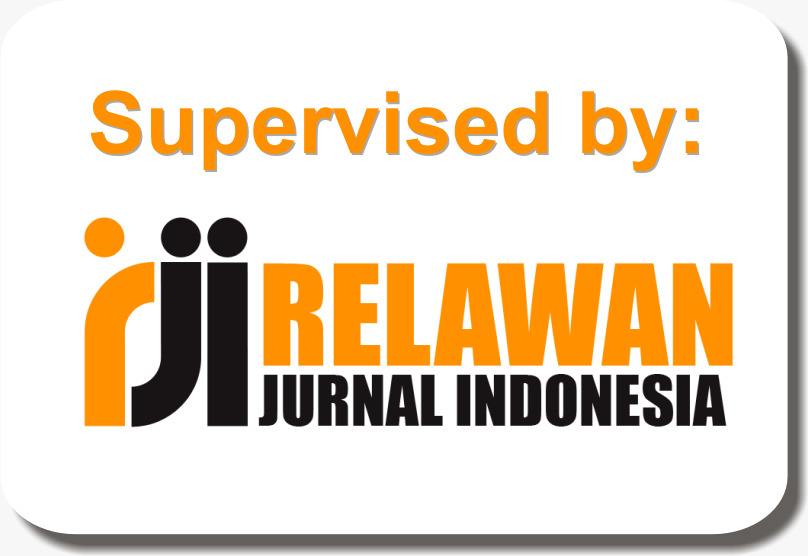QUALITY ANALYSIS OF E-LEARNING WEBSITE AT PT XYZ USING MODIFIED WEBQUAL METHOD AND IMPORTANCE PERFORMANCE ANALYSIS
Abstract
Keywords
Full Text:
PDFReferences
M. H. AL Hussaini, “Effect of Information Technology on Education,” International Journal of Information technology and Computer Engi-neering, no. 24, pp. 1–5, Jul. 2022, doi: 10.55529/ijitc24.1.5.
Y. Li, J. Dai, and L. Cui, “The impact of digital technologies on economic and environmental performance in the context of industry 4.0: A mod-erated mediation model,” Int J Prod Econ, vol. 229, Nov. 2020, doi: 10.1016/j.ijpe.2020.107777.
C. Liu, J. T. Marchewka, J. Lu, and C. S. Yu, “Beyond concern-a privacy-trust-behavioral intention model of electronic commerce,” Information and Management, vol. 42, no. 2, pp. 289–304, Jan. 2005, doi: 10.1016/j.im.2004.01.003.
S. Mardiana, “An Integrated Model of WebQual 4.0 and SERVQUAL: Answer to the Next Research Call,” JURNAL IPTEKKOM Jurnal Ilmu Pengetahuan & Teknologi Informasi, vol. 25, no. 1, pp. 137–150, Jun. 2023, doi: 10.17933/iptekkom.25.1.2023.137-150.
K. Handayani, E. H. Juningsih, D. Riana, S. Hadianti, A. Rifai, and R. K. Serli, “Measuring the Quality of Website Services covid19.kalbarprov.go.id Using the Webqual 4.0 Method,” in Journal of Physics: Conference Series, 2020. doi: 10.1088/1742-6596/1641/1/012049.
M. L. Jundillah, J. E. Suseno, and B. Surarso, “Evaluation of E-learning Websites Using the Webqual Method and Importance Performance Analysis,” in E3S Web of Conferences, 2019. doi: 10.1051/e3sconf/201912524001.
A. Parasuraman, V. A. Zeithaml, and L. L. Berry, “A Conceptual Model of Service Quality and Its Implications for Future Research,” J Mark, vol. 49, no. 4, p. 41, Autumn 1985, doi: 10.2307/1251430.
S. J. Barnes and R. Vidgen, “An Integrative Approach to the Assessment of E-Commerce Quality,” 2002. [Online]. Available: https://www.researchgate.net/publication/220437591
M. J. Culnan and P. K. Armstrong, “Information Privacy Concerns, Procedural Fairness, and Impersonal Trust: An Empirical Investigation,” Organization Science, vol. 10, no. 1, pp. 104–115, 1999, doi: 10.1287/orsc.10.1.104.
J. Vijaya Chandra, N. Challa, and S. K. Pasupuletti, “Authentication and authorization mechanism for cloud security,” Int J Eng Adv Technol, vol. 8, no. 6, pp. 2072–2078, Aug. 2019, doi: 10.35940/ijeat.F8473.088619.
F. Go and W. Zhang, “Applying importance-performance analysis to Beijing as an international meeting destination,” J Travel Res, vol. 35, no. 4, 1997, doi: 10.1177/004728759703500407.
B. L. Bruyere, D. A. Rodriguez, and J. J. Vaske, “Enhancing importance-performance analysis through segmentation,” Journal of Travel and Tourism Marketing, vol. 12, no. 1, 2002, doi: 10.1300/J073v12n01_05.
S. E. Sampson and M. J. Showalter, “The performance-importance response function: Observations and implications,” Service Industries Journal, vol. 19, no. 3, 1999, doi: 10.1080/02642069900000027.
I. Rašovská, M. Kubickova, and K. Ryglová, “Importance–performance analysis approach to destination management,” Tourism Economics, vol. 27, no. 4, 2021, doi: 10.1177/1354816620903913.
M. A. Athallah and K. Kraugusteeliana, “Analisis Kualitas Website Telkomsel Menggunakan Metode Webqual 4.0 dan Importance Performance Analysis,” CogITo Smart Journal, vol. 8, no. 1, 2022, doi: 10.31154/cogito.v8i1.374.171-182.
DOI: https://doi.org/10.29100/jipi.v10i3.6302
Refbacks
- There are currently no refbacks.

This work is licensed under a Creative Commons Attribution-ShareAlike 4.0 International License.
Website :Ýhttps://jurnal.stkippgritulungagung.ac.id/index.php/jipi/index
EmailÝ: jipi@stkippgritulungagung.ac.id

This work is licensed under a Creative Commons Attribution-ShareAlike 4.0 International License.




